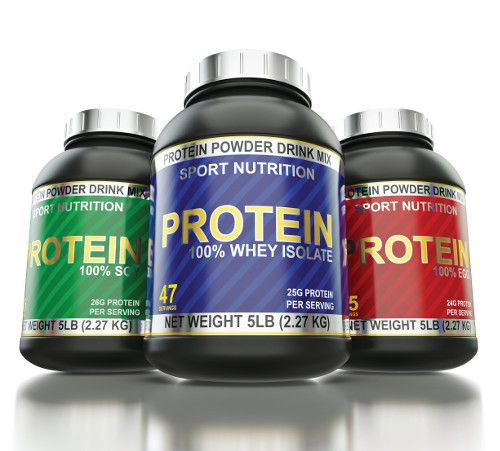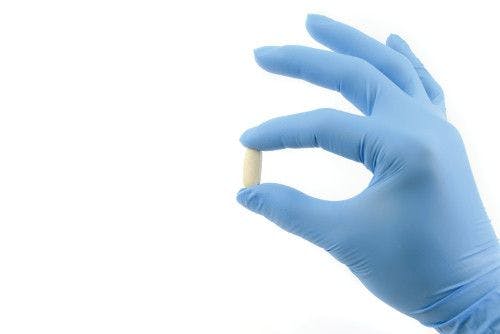Sports Nutrition, Led by Protein Products, Growing at Faster Rate than All Other Consumer Health Categories Globally, Euromonitor Says
Sports protein sales, specifically, are likely to reach $14.6 billion globally by 2021, Euromonitor predicts.
Photo © Shutterstock.com/DR Travel Photo and Video

Sports nutrition is the fastest-growing consumer health market category. Global sports nutrition sales rose from US $7.3 billion in 2011 to $11.9 billion in 2016. Looking forward, the global sports nutrition market is expected to continue growing at the fastest rate of any consumer health category worldwide (compared to categories like Over-the-Counter, Vitamins & Dietary Supplements, and Weight Management & Well-Being), at a compound annual growth rate (CAGR) of 7.9% over the forecast period 2016-2021. The sports nutrition industry continues to expand, growing not only among core users but also benefiting from global health and wellness trends that now prioritize healthy diets, physical activity, and efforts to extend healthy life spans.
Protein products continue to drive the sports nutrition industry, capturing more than 80% of global sports nutrition value sales in 2016. Over 2011-2016, sports protein products posted a 12.5% CAGR, reaching $9.7 billion globally, and are projected to reach $14.6 billion globally by 2021.
Protein Product Types
Within sports protein products, protein powders constitute the majority of value sales. With global sales reaching $7.7 billion in 2016, protein powder is still the most recognized delivery system for sports nutrition. Protein powders continue to be popular; compared to ready-to-drink protein products, protein powders are cheaper to ship, take up less space in the home, and tend to have longer shelf lives.
But make no mistake: while the other two types of sports protein products, protein bars and protein ready-to-drink, only represent 21% of sports protein value sales, these products have shown significant growth as well. Over 2011-2016, bars and ready-to-drink posted CAGRs of 5.7% and 7.7%, respectively, to reach global sales of $952 million and $1.1 billion, respectively.
Marketing strategies targeting busy professionals who are attracted to on-the-go formats and new formulations are helping marketers of these products to overcome longstanding perceptions of poor taste quality. This, coupled with expansion into mass retailing channels and some notable 2017 launches, such as Muscle Milk protein bars and premium fitness lifestyle brand FitJoy Protein Bar (by Nutrabolt), plus greater acknowledgement of protein ready-to-drinks as healthy snacks, helped boost sales of protein bars and protein ready-to-drinks to a combined 10% CAGR globally over 2011-2016-equal to protein powder’s growth.
Protein: Shifting Perceptions
When zooming out and looking at the performance of protein-based products within the whole consumer health industry in 2011-2016, sports protein products showed the highest growth rate (12.5% CAGR), followed by supplement nutrition drinks (11.5% CAGR), protein supplements (10% CAGR), and meal replacements (5.5% CAGR). These differences in growth rates, especially between sports protein products (higher growth) and meal replacements (lower growth), are due to a shift in consumer behaviour-namely, consumers are moving away from thinking of protein’s purpose as being primarily for weight loss and instead focusing more on seeking protein-rich lifestyle products with which to stay healthy. This change is happening mainly in developed markets where consumers are increasingly viewing healthy weight as a key aspect of wellbeing through their entire life span, broadening the attraction of products marketed towards overall health gains, where sports nutrition products fit in nicely.
And although sports protein products have higher sales than other protein-based products, one competitor that still surpasses sports nutrition protein sales is sports drinks, which include isotonic, hypotonic, and hypertonic drinks. Sales of sports drinks are projected to reach $23 billion globally by 2021 compared to sports nutrition protein products, which are forecast to reach $17 billion globally by 2021. Beyond 2021, however, sports nutrition protein products could surpass sports drinks on the back of consistently strong year-on-year growth.
This growth will be driven by consumer demand for all-natural, transparent, and organic formulations; active-lifestyle trends; high-protein diets; and expansion of the sports nutrition consumer base, who believes that strong is the new skinny to stay healthy throughout a life span. In this scenario, sports nutrition producers that want to appeal not only to bodybuilders are facing greater pressure to adapt. Hence, all-natural and organic formulations are on the rise, from organic grass-fed whey to plant-based protein formulations. Demand for the latter is growing rapidly among consumers looking to stick to vegan/vegetarian diets, animal cruelty–free followers (especially Millennials and Generation Z consumers), users who fear potential antibiotics pollution in dairy products, and consumers looking to eliminate dairy (i.e., whey) from their diets to avoid allergies.
This plant protein trend tends to not include soy because of the rising number of people reportedly developing soy allergies. With consumer preferences in mind, firms have rolled out new protein products accordingly in 2017. These include a new sport line from Garden of Life, which includes organic grass-fed whey protein and non-GMO, soy-free, plant protein–based products; and the new Evolve line from CytoSport (the manufacturer of Muscle Milk), which is a non-GMO, soy-free, plant-protein ready-to-drink sports nutrition line.
The future of sports nutrition is bright, especially for companies focusing on clean-label demands and plant-based protein products. Companies geared for success are those that take advantage of the expanding consumer base and make an extra effort to engage with specific crowd cultures to better speak to each group’s lifestyle.
Carolina Ordonez is a consumer health analyst at Euromonitor International. She brings several years of work experience as a researcher, consultant, and speaker, having helped firms with strategy planning and business expansion throughout the Americas. In her current role, she provides insights on the latest trends in consumer health, including over-the-counter drugs (OTC), vitamins, dietary supplements, sports nutrition, and weight management and wellbeing products. She holds a Master’s degree in International Management from University of Exeter in the UK.
Also read:2017 Plant Protein Ingredient UpdateWhich Flavors Work Best for Dairy Protein versus Plant Protein?The Next Generation of Plant-Based Beverages

Prinova acquires Aplinova to further increase its footprint in Latin America
April 7th 2025Prinova has recently announced the acquisition of Brazilian ingredients distributor Aplinova, which is a provider of specialty ingredients for a range of market segments that include food, beverage, supplements, and personal care.

























